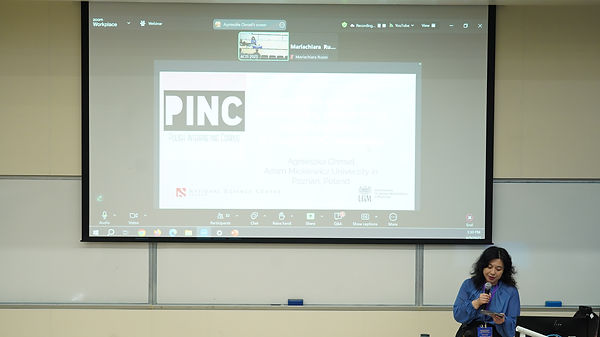

Agnieszka Chmiel
Adam Mickiewicz University
Agnieszka Chmiel is Associate Professor in the Department of Translation Studies, Adam Mickiewicz University in Poznań, Poland. She also works in the EYE-LANG Eye-tracking Laboratory for Research in Language. Her research interests include interpreting studies and audio description. She is Associate Editor of TARGET and Principal Investigator in various research projects. ORCID: 0000-0002-2138-3974
Interpreting Goes PINC: Researching Interpreting and Interpreters Through PINC Metadata
Abstract
The focus of corpus-based interpreting studies has traditionally been on the product of interpreting. However, an interpreting corpus with rich metadata makes it possible to extend this line of research by investigating both the process of interpreting and the interpreters themselves. In this talk, I will show how this is possible on the example of PINC, the Polish Interpreting Corpus. I will first present PINC which is a 220,000-token corpus of Polish-English and English-Polish interpretations sourced from the European Parliament that has been created to investigate bilingual control mechanisms in interpreting. PINC includes a rich set of annotations and metadata, including human-annotated audio-text alignment for both source and target texts, word-level source-text alignment, interpreter voice identification and metadata about the interpreters’ working memory scores, age and experience obtained earlier through experimental research. I will then show examples of studies based on PINC that investigate both interpreting and interpreters. With the focus on interpreting, I will present analyses of fundamental frequency and pauses that tap into factors and problem triggers influencing the cognitive load in interpreting. With the focus on interpreters, I will share findings about individual differences in source-text compression rates and ear-voice span. I will finish by outlining further corpus-based research avenues and pedagogical uses of interpreting corpora that are possible thanks to recent developments in automatic translation quality assessment.
_JPG.jpg)
